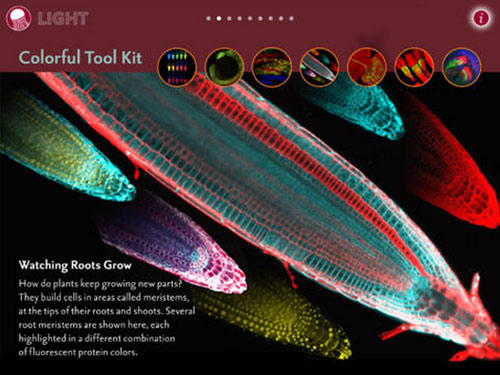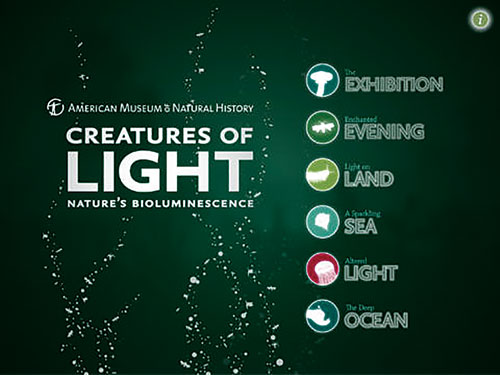Taralyn Tan Ph.D. Curriculum Fellow Harvard Medical
Now that summer’s over, return to work refreshed and prepared with these time-saving apps.
Is there an app for that? If there is, you should check if it's in GEN's Best Science Apps first! Every month, we bring you a list of the best biotech- and biopharma-related apps we think you, GEN reader, would find useful and/or interesting. Here is our most recent list of Best Science Apps. Enjoy!
Key:
Four stars: Excellent
Three stars: Very Good
Two stars: Good
+ Strong points
– Weak points
Creatures of Light ★★★★
Platform: iPad
Cost: Free
+ Beautiful app, nice videos and animations
Whether the flicker of fireflies or the glow of jellyfish, bioluminescence exists in many forms. The American Museum of Natural History’s Creatures of Light app serves as a companion to the museum’s bioluminescence exhibit, but even if you can’t visit the museum, the app provides an exciting tour through nature all on its own. Beyond a section of the app devoted to the exhibition, the app contains five sections that each explores bioluminescence in a different setting. Enchanted Evening teaches users about fireflies; Light on Land explores glowworms and other land-dwelling bioluminescent critters; A Sparkling Sea dives into the world of dinoflagellates; Altered Light explores fluorescent animals like jellyfish; and The Deep Ocean introduces users to the many different types of deep-dwelling bioluminescence creatures.
Advanced Molecular Genetics Database Search Tool ★★★
Platform: iPad/iPhone
Cost: Free
+ Simple interface
– Some search features don’t work well
The Advanced Molecular Genetics Database Search Tool app (say that ten times fast) by Exiqon provides users access to a number of transcriptome databases (with an emphasis on micro RNAs) via a simple and easy-to-navigate interface. Users start by selecting their species of interest—human, mouse, or rat—and then search by gene name, disease, tissue, or keyword. (Searching by gene name appears to work best, as many disease names or keywords yielded either “no results” or “too many results.”) For any given gene, a list of regulating miRNAs (empirical or predicted) is provided. Selecting any listed miRNA displays the original literature citation. As the app is a product of a company, users can also explore the various Exiqon products available for miRNA experiments.
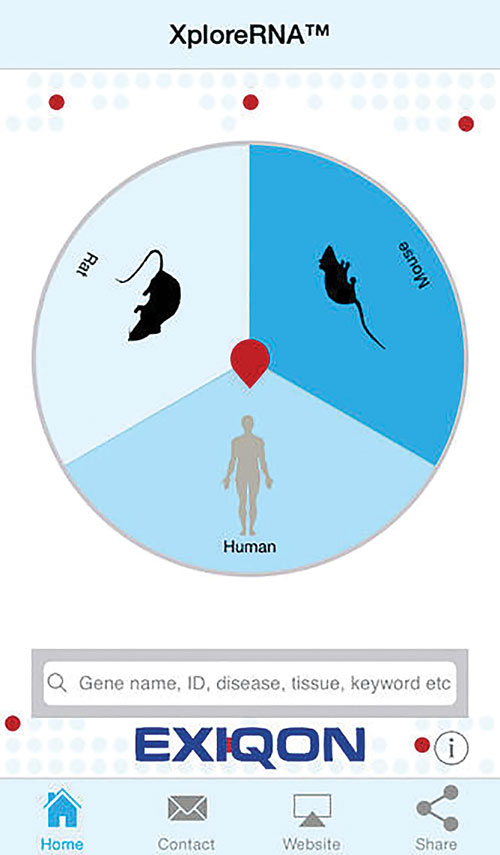
Advanced Molecular Genetics Database Search Tool for iPad and iPhone
LabOfficer ★★
Platform: iPhone/iPad
Cost: Free (may go up soon)
+ Good variety of tools
– App can be somewhat unresponsive, occasionally glitchy
LabOfficer offers a nice array of resources for bench scientists, all packaged together in a convenient, simple app. The app is composed of four sections: buffer checker, screening digestion, alignment, and codon table. The buffer checker tool provides a large list of restriction enzymes and their cut sites. Users can select a specific enzyme to display its buffer compatibility (New England Biolabs buffers) and other essential information such as digestion conditions and heat inactivation requirements. The screening digestion feature allows users to upload DNA sequences (either locally or from Dropbox) and search for restriction enzyme sites that meet user-specified parameters. Similarly, the alignment feature of the app lets users align and compare multiple uploaded sequences. Finally, the codon table tool presents a standard codon table, but it also offers the convenient option to type in three nucleotides to quickly identify the corresponding amino acid.
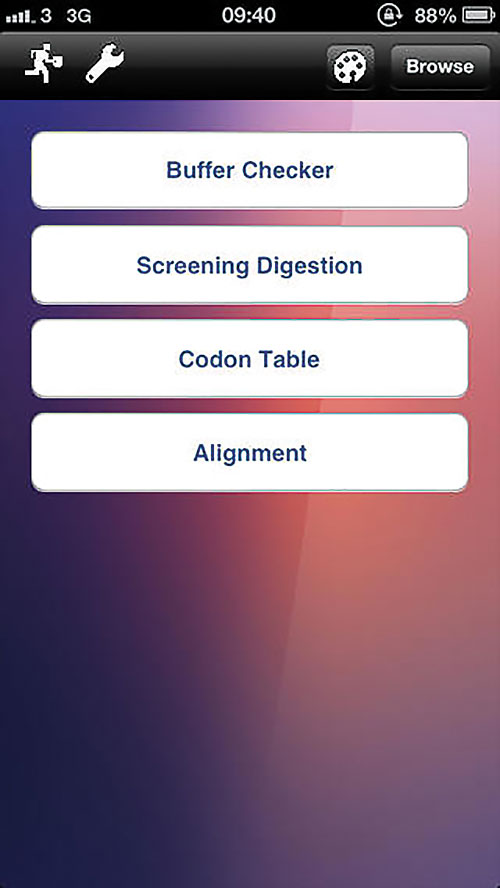
LabOfficer for iPad and iPhone
Science Radio ★★★★
Platform: iPad/iPhone/Android
Cost: Free
+ Continuous science news from a variety of sources
– No counter during current program
Not getting your fill of science news? The Science Radio app, part of the National Science Foundation’s Science360 network, provides continuous audio programming (yes that’s right—24 hours a day, seven days a week) drawn from various podcasts and news sources. The interface for the app is very simple (as one might expect from a largely audio app). The currently scheduled program is listed (title, source, and run time), as well as the next program that is coming up. A limitation of this very simple display is that there is no counter depicting how far into the current program you are. Users can “pause” the radio but this really amounts to simply muting it, as the show continues to progress even in the absence of you listening to it.
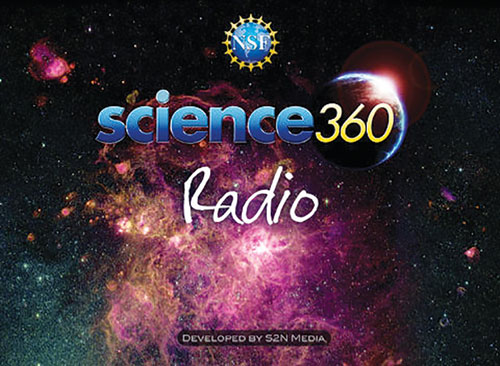
Science Radio for iPad and iPhone (also available for Android)
Play to Cure: Genes in Space ★★★
Platform: iPad/iPhone/Android
Cost: Free
+ Fun and engaging game
– No scientific information provided about the underlying data
At first glance this space game does not appear to have anything to do with science, except for the fact that as a player you are an employee of Bitfrost Industries and your mission is to scour the galaxy collecting as much Element Alpha as you can. However, the “clouds” of Element Alpha through which players chart their course actually represent genetic data from cancer patients. Thus, as players identify the densest regions of “Element Alpha,” they are helping scientists identify potential hotspots or mutations in the genome that are strongly associated with cancer. As a game, Genes in Space is engaging and fun to play. On the science side of things, however, it would be nice if more details about the “cancer data” (as it’s simply referred to as) were provided.
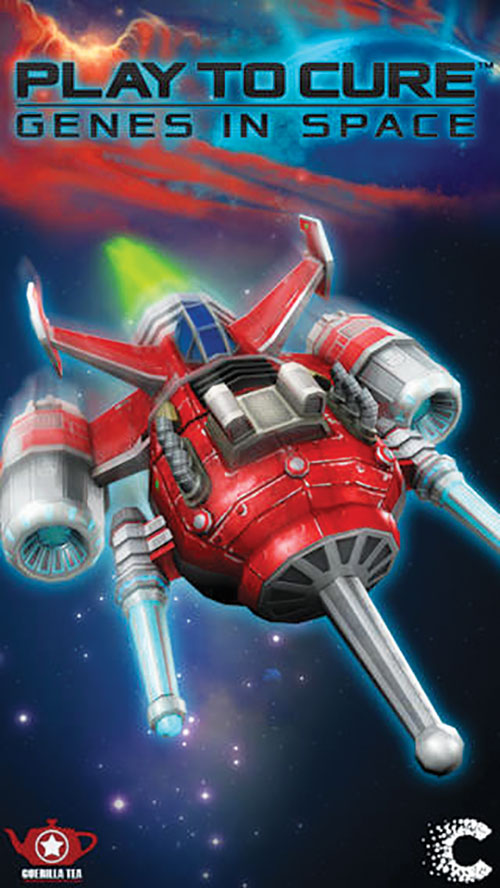
Play to Cure: Genes in Space for iPad and iPhone (also available for Android)
My Cancer Genome ★★★
Platform: iPad/iPhone
Cost: Free
+ Large collection of genes and drugs
– No details provided for drug mechanisms
Vanderbilt University’s My Cancer Genome app provides a great deal of information related to the genetics of cancer and genetically informed cancer therapeutics. The app is divided into two sections. On the “variants” page users can browse (or search) diseases, genes, and gene variants. For example, selecting a specific disease displays a description of that type of cancer as well as a list of associated genes and variants. The other section of the app deals with drugs, allowing users to browse by drug name, drug class, or target. Unfortunately, selecting on a specific drug class (such as topoisomerase inhibitors) only directs users to a list of other drugs of that class, rather than providing additional details about the mechanism of action of that class of drug.
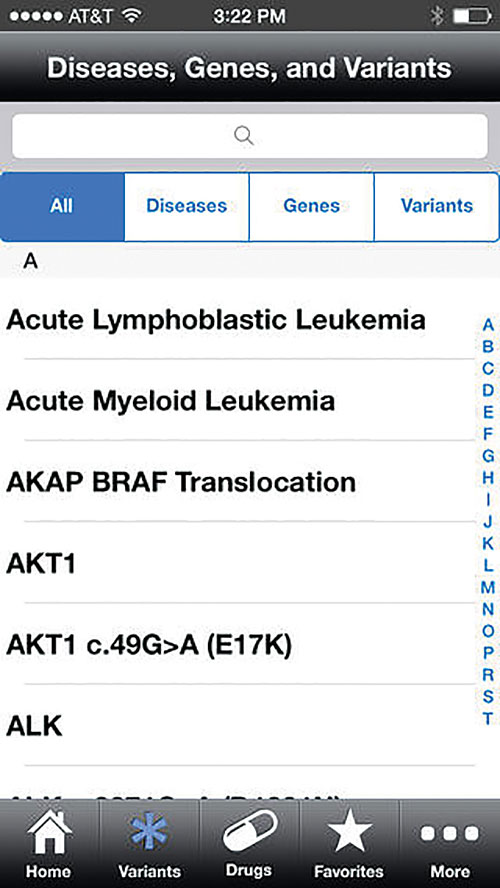
My Cancer Genome for iPad and iPhone
Want more Best Science Apps? Click here! Also, to suggest an app for Best Science Apps, please send a link to Taralyn Tan ([email protected]).

